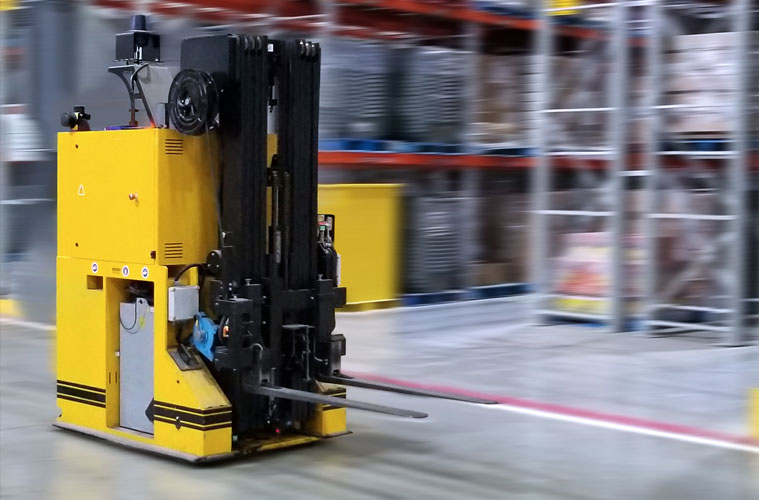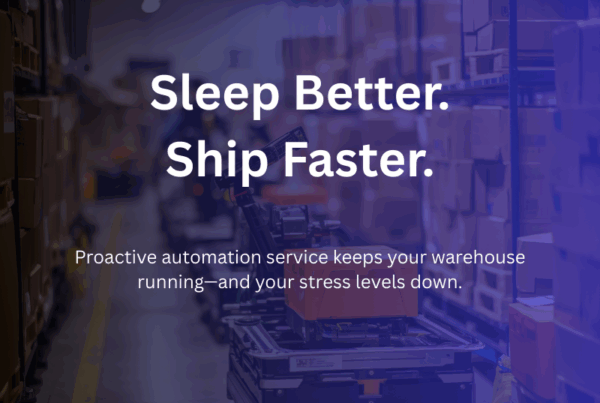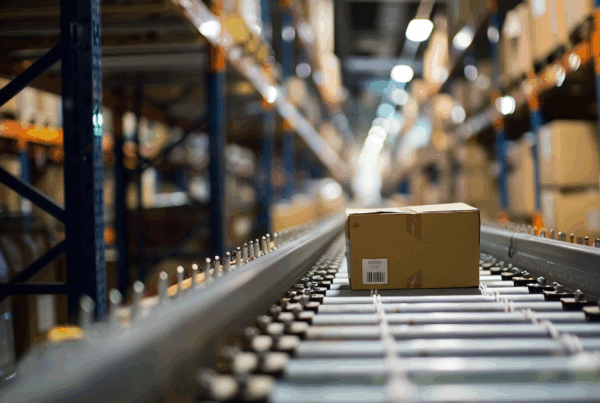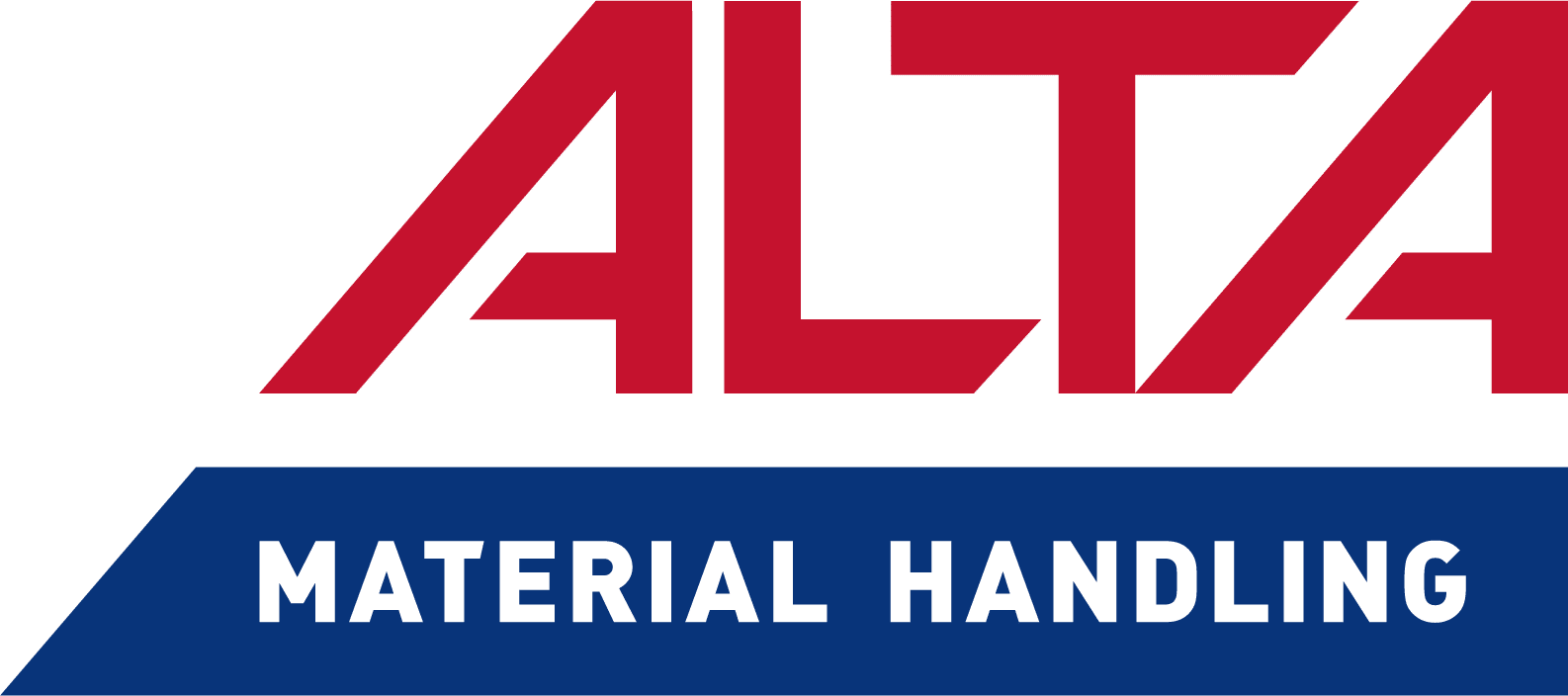As industries everywhere continue to adjust to COVID-19, the labor shortages that have plagued the industry for years are only getting worse. The latest analysis shows that there are nearly two open jobs for every American actively looking for work. What was at first called The Great Resignation has become The Grand Redesign as employees and employers alike look to adjust the workforce to match a changed landscape.
Potential employees are looking to better match their skill sets to their career. For many people, the lockdowns and quarantines of COVID-19 afforded them the time to take stock of their priorities. They are now looking for better paying, safer, and less physically demanding work that they also find rewarding.
Automated Guided Vehicles (AGVs) are a value-adding system that can address these changing needs of your workforce, while cutting costs and increasing efficiencies.
Increase operational performance and inventory accuracy
In a survey of leading companies in the material handling industry, “attracting and retaining a qualified workforce” was cited by 48% of the respondents as their leading concern. In a tight labor market with increasing wages, and in an increasingly competitive industry, finding value-adding systems to attract leading talent, maximize their productivity, and retain them is paramount.
Depending on the application, automation isn’t usually a one-to-one replacement for an operator. But the right automated solution lets material-handling companies balance the changing labor market with the changing needs of their business.
In 2017, Material Handling & Logistics described AGVs as “the backbone for the modern material management and material handling industry,” and the industry’s reliance on them has only grown since.
Modern AGVs, equipped with smart lithium-ion batteries, can operate 24/7 with limited downtime for recharging. Because they’re connected to a warehouse’s WMS, their speeds, destination, and cargo can all be optimized in real-time for the needs of the facility, increasing efficiency by eliminating bottlenecks.
This real-time integration of warehouse information enables AGVs to be an integral part of lowering costs even in industries that were once difficult to manage, like food and beverages. Combined with a robust WMS, AGVs help ensure that stacked pallets aren’t overloaded, that perishable goods are properly rotated, and that temperature controls are maintained. This is in addition to the improvements in inventory control AGVs bring to every industry.
AGVs are a scalable solution that are versatile enough to be incorporated into an already-existing facility’s processes, while being functional enough to be engineered as the primary movers in the design of a new facility.
Move larger loads at multiple levels
Automation is evolving to meet the industry’s changing needs. These machines are smarter and more efficient than ever before and are designed to fill every niche in the material handling environment.
AGV Forklifts, a scalable solution for moving merchandise in and out of multi-level storage, are some of the most effective ways to boost productivity in warehouses. Like all AGVs, they are equipped with navigational controls and connected to the WMS. This means they help improve inventory controls, increase accuracy in everything from replenishment to shipping and, with lithium-ion battery technology, can operate nearly 24/7.
In addition, AGV Forklifts help increase safety in a warehouse environment by taking one of the most dangerous tasks out of the hands of human operators. OSHA estimates that, in a given year, a traditionally operated forklift has a better than 1-in-10 chance of being involved in a lost-time accident. They cause, on average, nearly 35,000 serious injuries, 62,000 non-serious injuries, and an untold amount of unreported property damage.
Unlike human operators, AGVs are programmed to move at a safe speed along predetermined routes. They don’t lift improperly balanced loads or get distracted, and they do stop when confronted with an obstruction.
Advanced navigation and safety features allow collaborative work
While AGV technology is decades old, recent advances in computing and networking have made them an essential part of modern material handling.
Advanced navigational technology allows AGVs to map out and respond to their environment in real time. They use both passive and active systems to keep the people around them safe, including audible and visual alarms, pressure-sensitive stop bumpers, cameras, lasers, receivers, and other sensors.
As an AGV carries out a task, it compares the data it receives through its sensors to a pre-recorded map, allowing it to respond to both obstacles and people. While people working around them do need to be trained – there are pathways and safety zones that should be maintained for both efficiency and safety – this training is minimal, and AGVs are recognized as being safer to work around than manually operated vehicles.
AGVs perform the kind of repetitive, non-value adding tasks that studies show today’s workers are actively avoiding. By providing consistent transport of boxed or palletized goods, AGVs improve employee retention, safety, and morale.
Because they are driverless, they can operate in conditions that would be hazardous to people – including temperature extremes and hazardous atmospheres. Plus, by having them ferry goods between people and work stations, they allow facilities to better control their social distancing measures – important during the cold and flu season and crucial during pandemics.
This brings to your workforce many of the very advantages employees are looking for in a changing work landscape. It creates a safer workplace, takes away dull and repetitive, and enables you to shift your people into roles that are more value-adding and fulfilling.
Want to learn more about automated guided vehicles? Contact us to talk details and strategies.
2x the volume and $100K in savings.
PeakLogix helped Merit Medical double volume and increase productivity by 200% while maintaining staffing levels reducing overtime.





